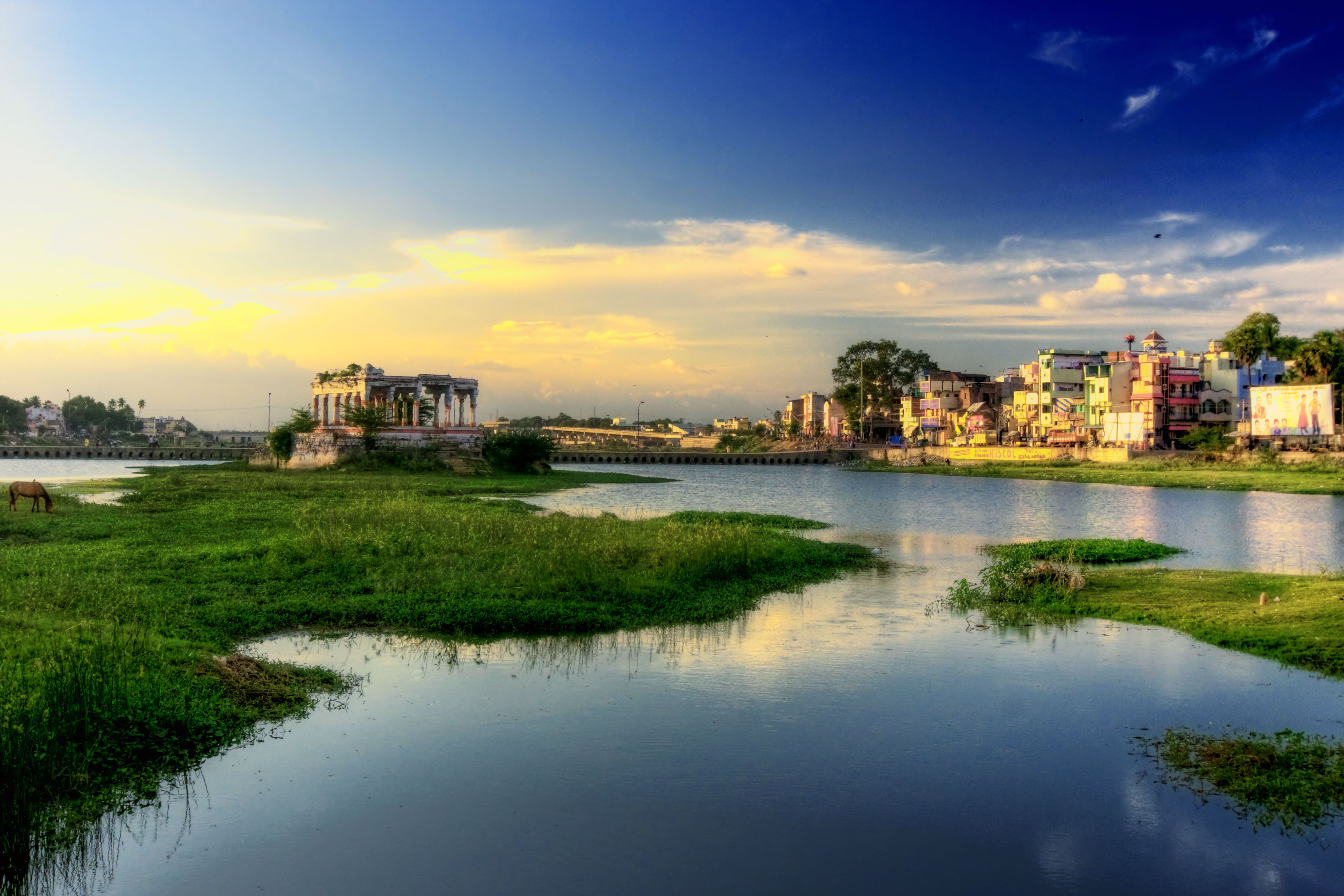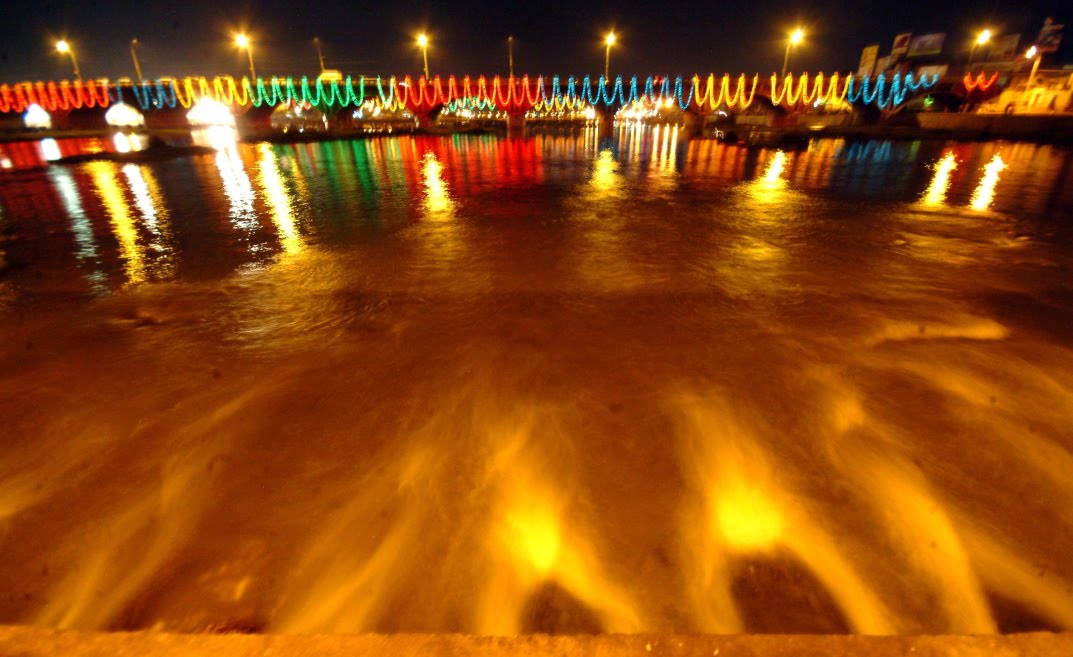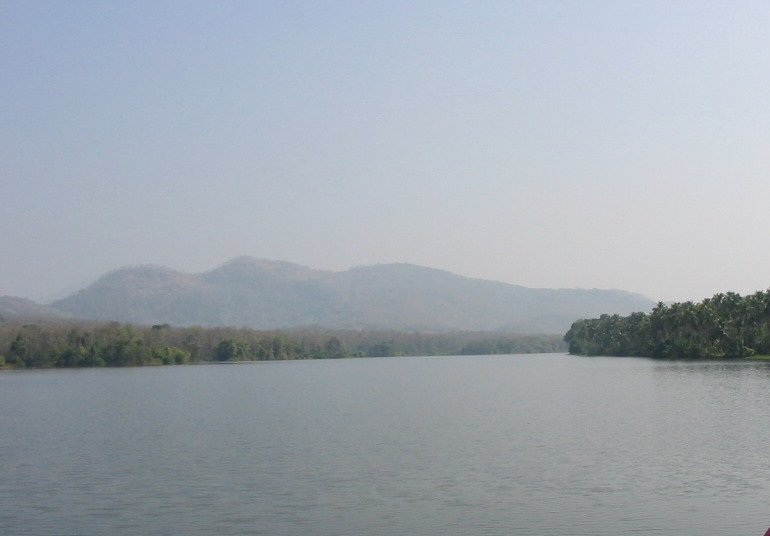|
River Vaigai
The Vaigai is a river in the Tamil Nadu state of southern India; it passes through the towns of Theni, Dindigul and Madurai. It originates in Varusanadu Hills, the Periyar Plateau of the Western Ghats range, and flows northeast through the Kambam Valley, which lies between the Palani Hills to the north and the Varushanad Hills to the south. The Vattaparai Falls are located on this river. As it rounds the eastern corner of the Varushanad Hills, the river turns southeast, running through the region of Pandya Nadu. Madurai, the largest city in the Pandya Nadu region and its ancient capital, lies on the Vaigai. The river empties into the Palk Bay near Alagankulam, close to Pamban Bridge in Ramanathapuram District. The Vaigai is long, with a drainage basin large. Vaigai Mention Sangam literature (circa 300 BCE to 300 CE) has paid many tributes to Vaigai, extolling it as 'the river that brings water when one touches it', viz the etymology Vai (place your) + gai (hands) = p ... [...More Info...] [...Related Items...] OR: [Wikipedia] [Google] [Baidu] |
Varusanadu
Varusanadu is a village panchayat (code: 232202) in Theni district, Theni District of Tamil Nadu, which is located in the bank of Vaigai River. This village comes under Kadamalaigundu - Mayiladumparai Kadamalaigundu - Mayiladumparai Panchayat union, Panchayat union and Andipatti Taluk. The valley around this area is called Varusanadu Valley, which is a part of Cumbum Valley in Western Ghats and is connected to Meghamalai, Meghamalai Mountains. Vaigai River is originating from this valley under Periyar (river), Periyar Plateau of western ghats. History During earlier periods (way before Indian Independence), this area is completely occupied by trees in the Valley area. A well known Tamil language, Tamil proverb "Varusanattukku pona, vacha edatha sollittu po" (''Before leaving to varusanadu, let someone know about your properties and belongings'') to give an indication that 'no one ever come back alive after visiting this valley, it is such a danger'. This area was under Kandamanur ... [...More Info...] [...Related Items...] OR: [Wikipedia] [Google] [Baidu] |
Shiva
Shiva (; sa, शिव, lit=The Auspicious One, Śiva ), also known as Mahadeva (; ɐɦaːd̪eːʋɐ, or Hara, is one of the principal deities of Hinduism. He is the Supreme Being in Shaivism, one of the major traditions within Hinduism. Shiva is known as "The Destroyer" within the Trimurti, the Hindu trinity which also includes Brahma and Vishnu. In the Shaivite tradition, Shiva is the Supreme Lord who creates, protects and transforms the universe. In the goddess-oriented Shakta tradition, the Supreme Goddess ( Devi) is regarded as the energy and creative power (Shakti) and the equal complementary partner of Shiva. Shiva is one of the five equivalent deities in Panchayatana puja of the Smarta tradition of Hinduism. Shiva has many aspects, benevolent as well as fearsome. In benevolent aspects, he is depicted as an omniscient Yogi who lives an ascetic life on Mount Kailash as well as a householder with his wife Parvati and his three children, Ganesha, Kartikeya and A ... [...More Info...] [...Related Items...] OR: [Wikipedia] [Google] [Baidu] |
Vaigai River Illumination
The Vaigai is a river in the Tamil Nadu state of southern India; it passes through the towns of Theni, Dindigul and Madurai. It originates in Varusanadu Hills, the Periyar Plateau of the Western Ghats range, and flows northeast through the Kambam Valley, which lies between the Palani Hills to the north and the Varushanad Hills to the south. The Vattaparai Falls are located on this river. As it rounds the eastern corner of the Varushanad Hills, the river turns southeast, running through the region of Pandya Nadu. Madurai, the largest city in the Pandya Nadu region and its ancient capital, lies on the Vaigai. The river empties into the Palk Bay near Alagankulam, close to Pamban Bridge in Ramanathapuram District. The Vaigai is long, with a drainage basin large. Vaigai Mention Sangam literature (circa 300 BCE to 300 CE) has paid many tributes to Vaigai, extolling it as 'the river that brings water when one touches it', viz the etymology Vai (place your) + gai (hands) = place ... [...More Info...] [...Related Items...] OR: [Wikipedia] [Google] [Baidu] |
Kerala
Kerala ( ; ) is a state on the Malabar Coast of India. It was formed on 1 November 1956, following the passage of the States Reorganisation Act, by combining Malayalam-speaking regions of the erstwhile regions of Cochin, Malabar, South Canara, and Thiruvithamkoor. Spread over , Kerala is the 21st largest Indian state by area. It is bordered by Karnataka to the north and northeast, Tamil Nadu to the east and south, and the Lakshadweep Sea to the west. With 33 million inhabitants as per the 2011 census, Kerala is the 13th-largest Indian state by population. It is divided into 14 districts with the capital being Thiruvananthapuram. Malayalam is the most widely spoken language and is also the official language of the state. The Chera dynasty was the first prominent kingdom based in Kerala. The Ay kingdom in the deep south and the Ezhimala kingdom in the north formed the other kingdoms in the early years of the Common Era (CE). The region had been a prominent spic ... [...More Info...] [...Related Items...] OR: [Wikipedia] [Google] [Baidu] |
Periyar River
Periyar, , (meaning: ''big river'') is the longest river and the river with the largest discharge potential in the Indian state of Kerala. It is one of the few perennial rivers in the region and provides drinking water for several major towns. The Periyar is of utmost significance to the economy of Kerala. It generates a significant proportion of Kerala's electrical power via the Idukki Dam and flows along a region of industrial and commercial activity. The river also provides water for irrigation and domestic use throughout its course besides supporting a rich fishery. Due to these reasons, the river has been named the "Lifeline of Kerala". Kochi city, in the vicinity of the river mouth draws its water supply from Aluva, an upstream site sufficiently free of seawater intrusion. Twenty five percent of Kerala's industries are along the banks of river Periyar. These are mostly crowded within a stretch of in the Eloor-Edayar region (Udhyogamandal), about north of Kochi harbor. ... [...More Info...] [...Related Items...] OR: [Wikipedia] [Google] [Baidu] |
Vaigai Dam
The Vaigai Dam is built across the Vaigai River near Andipatti, in the Theni district of Tamil Nadu, southern India. Near the dam, the Government of Tamil Nadu has constructed an Agricultural Research Station for researching the growing of a variety of crops, including rice, sorghum, blackgram, cowpea and cotton. History Vaigai Dam was inaugurated on 21 January 1959 by Tamil Nadu chief Minister K. Kamaraj. It One of the few dams which is not constructed in between two mountains so this dam completely depends on its own concrete strength. This dam is the life line of farmers of the five districts namely Theni, Dindigul, Madurai, Sivagangai and Ramanathapuram. It provides water for irrigation for the above-mentioned 5 districts as well as this dam also provides drinking water for major cities such as Theni, Madurai, Ramanathapuram, e.t.c. which lies along its riverbed. Capacity Vaigai Dam measures 111 ft in height and can store water up to 71 ft, with a total storag ... [...More Info...] [...Related Items...] OR: [Wikipedia] [Google] [Baidu] |
Kottagudi River
Kottagudi is a river flowing in the Theni district of the Indian state of Tamil Nadu. Kottagudi river flows from Meesapulimala in the foothills of Athiyuthu, Anakarai in western ghats.it is a Tributary river and stretches for a distance up to 40 km and later merges with Veerapandi river( an extension of Mullaiperiyar river). It acts as the main water source and used for drinking in nearby villages and towns like Bodinayakanur, Durairajapuram etc. FlashFloods in this river has been reported during rainy season. The first water supply scheme was executed in 1944 and another in 1988 across this river. Currently, the total quantity of water supplied from the river is about 7.13 MLD, which translates to 90 litres per capita per day (LPCD). Government have proposed to build a new check dam in order to facilitate the water supply. There is a check dam already available in Naripatti village. References See also List of rivers of Tamil Nadu {{Use Indian English, date=A ... [...More Info...] [...Related Items...] OR: [Wikipedia] [Google] [Baidu] |
Manjalar River
Manjalar originates from Palani Hills, Tamil Nadu and runs towards east and joins the Vaigai River near Koottathu. There are nine anicuts and nine tanks in this sub-basin. It receives an annual rainfall of . The total sub-basin area is . The total ayacut of the sub-basin is . The Manjalar Dam spans the river near Batlagundu. See also * Thalaiyar Falls * Varaha River The Varaha River (or Varahanadhi) is a small river that flows through the town of Periyakulam in Theni district of the state of Tamil Nadu in India. It joins the Vaigai River near Marugalpatti. The Sothuparai Dam spans the river near Periyakulam ... References Rivers of Tamil Nadu Rivers of India {{India-river-stub ... [...More Info...] [...Related Items...] OR: [Wikipedia] [Google] [Baidu] |
Varaha River
The Varaha River (or Varahanadhi) is a small river that flows through the town of Periyakulam in Theni district of the state of Tamil Nadu in India. It joins the Vaigai River near Marugalpatti. The Sothuparai Dam spans the river near Periyakulam. See also * Manjalar River Manjalar originates from Palani Hills, Tamil Nadu and runs towards east and joins the Vaigai River near Koottathu. There are nine anicuts and nine tanks in this sub-basin. It receives an annual rainfall of . The total sub-basin area is . The to ... References Rivers of Tamil Nadu Rivers of India {{India-river-stub ... [...More Info...] [...Related Items...] OR: [Wikipedia] [Google] [Baidu] |
A Sunrise Over Vaigai River In Madurai Tamil Nadu India
A, or a, is the first letter and the first vowel of the Latin alphabet, used in the modern English alphabet, the alphabets of other western European languages and others worldwide. Its name in English is ''a'' (pronounced ), plural ''aes''. It is similar in shape to the Ancient Greek letter alpha, from which it derives. The uppercase version consists of the two slanting sides of a triangle, crossed in the middle by a horizontal bar. The lowercase version can be written in two forms: the double-storey a and single-storey ɑ. The latter is commonly used in handwriting and fonts based on it, especially fonts intended to be read by children, and is also found in italic type. In English grammar, " a", and its variant " an", are indefinite articles. History The earliest certain ancestor of "A" is aleph (also written 'aleph), the first letter of the Phoenician alphabet, which consisted entirely of consonants (for that reason, it is also called an abjad to distinguish it fro ... [...More Info...] [...Related Items...] OR: [Wikipedia] [Google] [Baidu] |
Narayana
Narayana (Sanskrit: नारायण, IAST: ''Nārāyaṇa'') is one of the forms and names of Vishnu, who is in yogic slumber under the celestial waters, referring to the masculine principle. He is also known as Purushottama, and is considered the Supreme Being in Vaishnavism. Etymology L. B. Keny proposes that Narayana was associated with the Dravidian, and ultimately, the Indus Valley Civilisation, prior to his syncretism with Vishnu. To this end, he states that the etymology of the deity is associated with the Dravidian ''nara'', meaning water, ''ay'', which in Tamil means "to lie in a place", and ''an'', which is the masculine termination in Dravidian languages. He asserts that this is also the reason why Narayana is represented as lying on a serpent in the sea. He quotes, "This Nārāyana of the Āryan pantheon seems to be the supreme being of the Mohenjo-Darians, a god who was probably styled Ān, a name still kept in Tamil literature as Āndivanam, the prototype ... [...More Info...] [...Related Items...] OR: [Wikipedia] [Google] [Baidu] |




